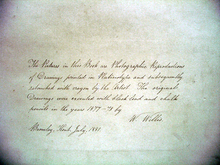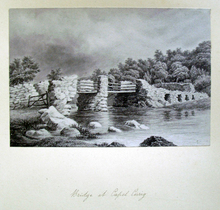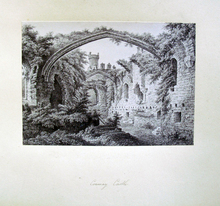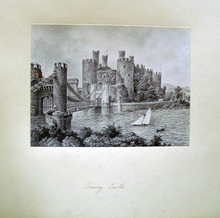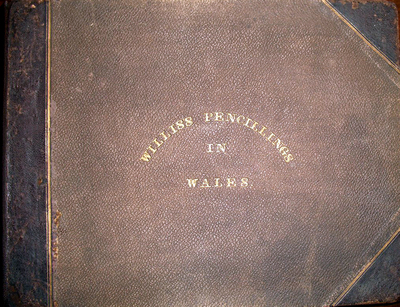In the early nineteenth century, the American author Nathaniel Parker Willis (1806-1867) wrote a travelogue in the London Quarterly under the heading Pencillings by the Way, collected and published in 1835.
In 1873 William Willis (1841-1923) patented the photographic process he called platinotype and used the popular title for a series of his own pictorial travelogues. In this 1881 album, recently acquired by graphic arts, he writes, “The Pictures in this Book are Photographic Reproductions of Drawings printed in Platinotype and subsequently retouched with crayon by the Artist. The original Drawings were executed with black lead and chalk pencils in the years 1877-78 by W. Willis. Bromley, Kent, July 1881.”
William Willis (1841-1923), Willis’s Pencillings in Wales ([Bromley, Kent: Willis], 1881). Graphic Arts GAX 2010- in process
Platinotype is a photographic process using a finely precipitated platinum salt and an iron salt in the sensitizing solution to produce prints in platinum black. Mike Ware describes Willis’s invention in his site Alternative Photography: “Despite the best endeavours of the founders of photography in the 1840’s, nearly fifty years were to elapse before a viable platinum printing process was established by William Willis (1841-1923) who had himself devoted twenty years’ research to perfecting it.”
http://www.mikeware.co.uk/mikeware/Eighth_Metal.html
See also W.Willis, “A Recent Improvement in the Platinotype Process,” Journal of the Camera Club, 2, 47 (1888).
